After removing a large branch, you might find that the callus doesn’t form evenly around the wound. The best way to fix this is to reopen the wound. Here’s an example of a wound created one year ago after removing a large branch on a black pine.
Old wound on Japanese black pine
The top half of the wound is healing well but the bottom half has died back a bit.
Good callus formation on the top half of the wound
No callus
To encourage callus to form, I use a chisel, knife and knob cutter to carve away deadwood until I see signs of live wood. In this case, the live wood is yellow and white.
Live wood
Once I find the live wood, I expose a small amount of it all the way around the cut. The less that gets exposed, the better.
After reopening the wound
To keep the wound from drying out, I apply cut paste.
After applying cut paste
That’s it for now. I plan repeat the process next year as I expect the wound will close in about two years at the current rate.
Related Post
Subscribe to Bonsai Tonight
New Posts Delivered Every Tuesday and Friday

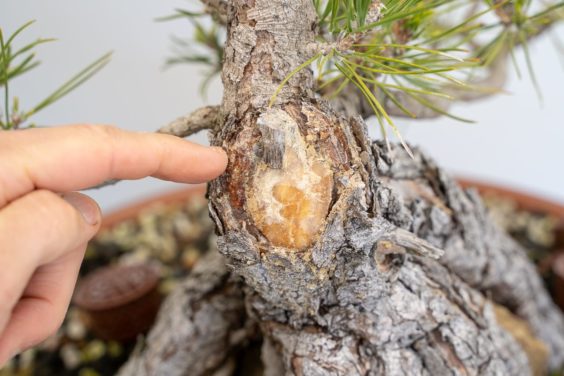
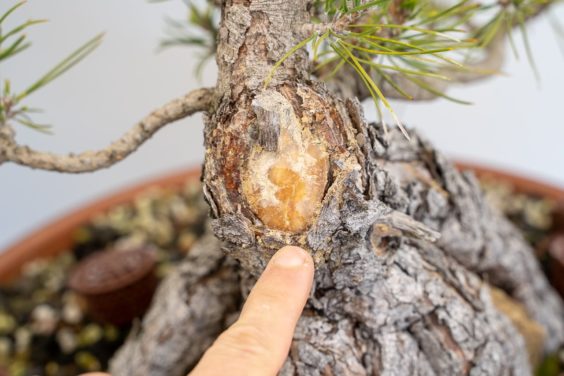
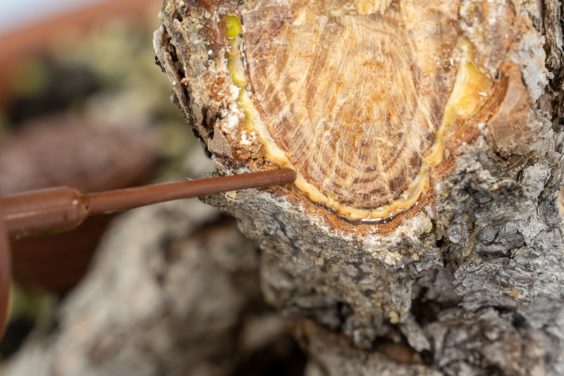
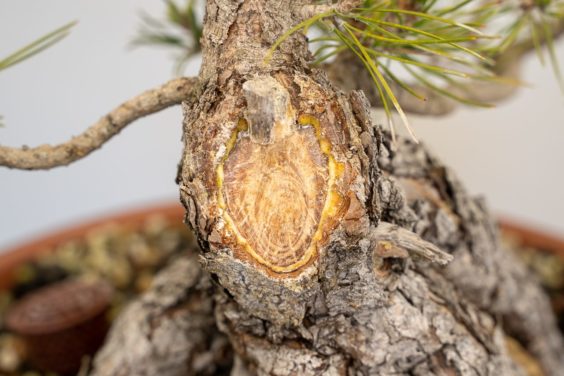
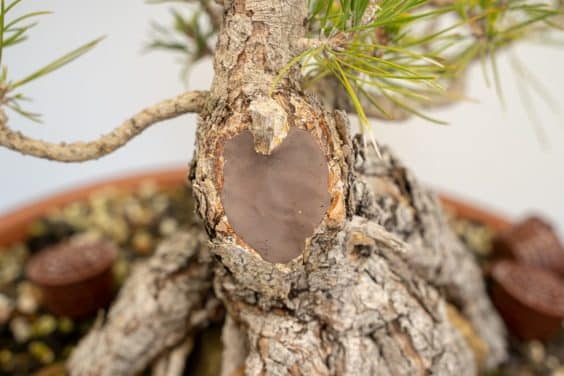
Lani says
Beautiful technique and explanation! Now I wonder, why did you leave a stub?
Alessandro says
Jin?
Jonas Dupuich says
Good question Lani – I sometimes leave a stub in the middle of large cuts on pines to provide some support for the callus. I then remove the stub once the wound has mostly closed.
Chris says
I was wondering, instead of cutting the whole branch, why not leave living tissue (bark and cambium) from the branch and use it to cover the wound as in Bonsai Techniques I p. 46? It will speed the healing if the technique works. Have any tried it before?
Jonas Dupuich says
Hi Chris – good idea, I haven’t tried that approach. I can imagine it working for smaller cuts as it would be easier to line up the flap with the wound. Will be curious to hear if people have found advantages to the approach.
Jeff Lahr says
Great explanation and illustration.
Jonas Dupuich says
Thanks Jeff!
Gary McCarthy says
Do you carve out at all the interior part of the callous to make it slightly concave so that as the callous rolls over it’s a little more flush with the rest of the trunk?
Jonas Dupuich says
Hi Gary – that’s exactly right. Making the cuts about as deep as the callus is thick can yield a good result on wounds like this.